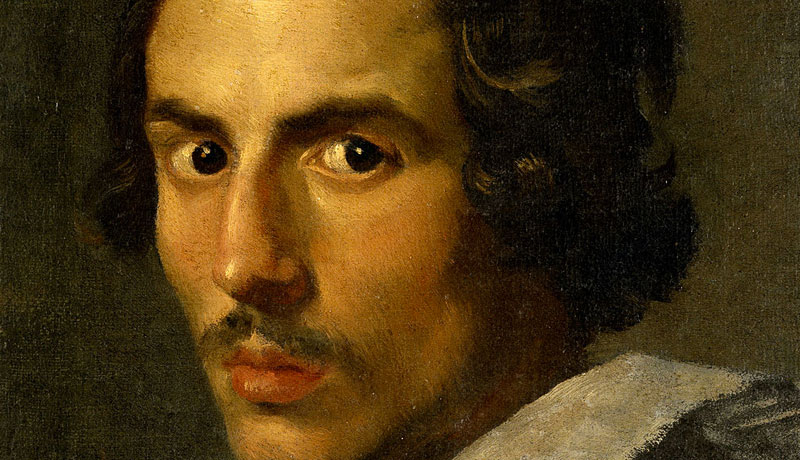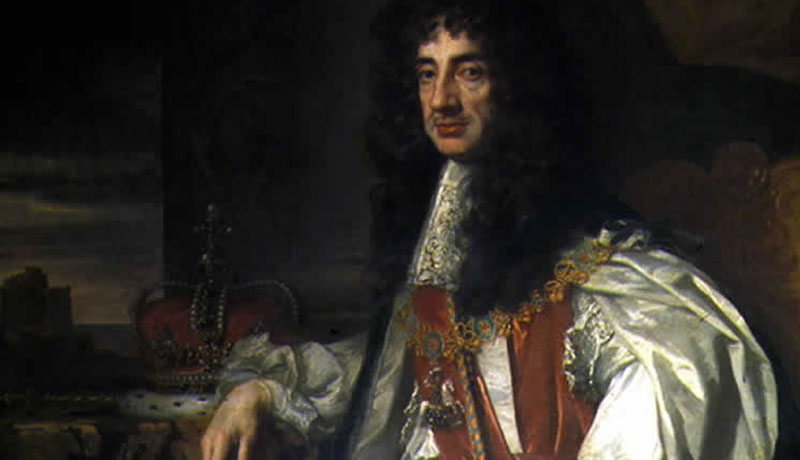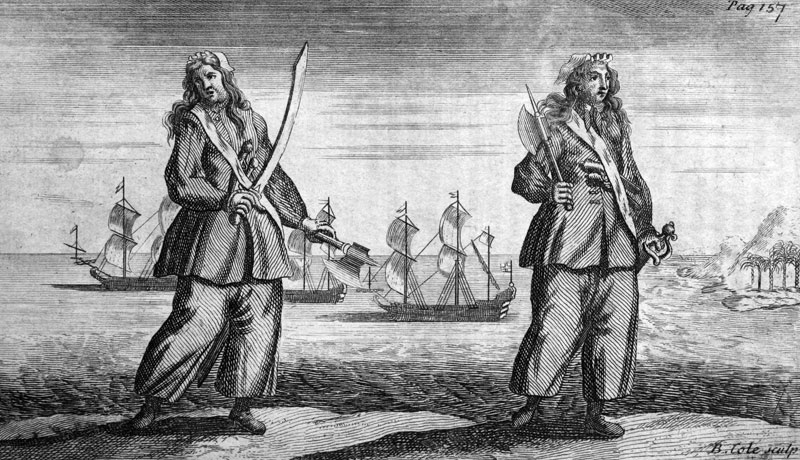Marines’ Memorial Theatre, San Francisco
5 lectures and 1 performance. Enjoying the patronage of Popes and the wealth of the resurgent Counter-Reformation Church, Bernini used his immense talents as an architect, painter, and especially as a sculptor to help define the unique visual style of the Baroque Age. In seventeenth-century Rome, designed by far-sighted urban planners in the shape of a star, Bernini and his collaborators and rivals restored a monumental grandeur to the Eternal City that still survives.
Friday, April 26, 2013, 7:30 to 10 pm
Bernini’s Rome.
Theodore Rabb (History, Princeton)
No city has had as many Golden Ages as Rome. The decades when it was transformed by Bernini and his contemporaries became at least Rome’s third experience of an astonishing outburst of creativity. During these years its people transformed the physical appearance of the city, as well as the esthetics of European art and architecture; they confronted new ways of exploring nature; and they struggled to make their way as the greatest powers of the day vied for control of the volatile city. The lecture sets the scene for the closer look at some of the achievements of the time that will occupy the rest of the program. Putting in context the leading figures in the church, in politics, in the arts, and in the world of ideas, it also suggests how people made a living, and how the nature of patronage and authority helped shape this Golden Age.
20-Minute Intermission
Performance: Performance: Music of Girolamo Frescobaldi (harpsichord), and Giulio Caccini.Corey Jamason (harpsichord), with lutenist Richard Savino and soprano Céline Ricci. Introduced by Kip Cranna.
Saturday, April 27, 2013, 10 am to noon and 1:30 to 4 pm
Welcome
Bernini and Borromini: Architecture, Patronage and Power in Baroque Rome.
Max Grossman (Art History, University of Texas, El Paso)
Gian Lorenzo Bernini and Francesco Borromini, the two most celebrated architects of seventeenth-century Rome, promoted completely different architectural visions at a time when the Catholic Church was struggling to redefine and reassert itself in the face of the Protestant threat. Bernini, the charming courtier and eminent sculptor, embraced a refined and purified classicism that he first employed in the facade of Santa Bibiana and later culminated in his monumental colonnades for St. Peter’s Square. Borromini, the irascible and melancholic scholar-architect, developed a highly idiosyncratic style that relied upon advanced geometrical calculations and radical experimentation. His first independent commission, San Carlo alle Quattro Fontane, and subsequent projects, especially Sant’Ivo alla Sapienza, represented an iconoclastic alternative to Bernini’s minimalist Renaissance-inspired designs. In spite of their early collaboration, the two men became locked in a bitter competition for the patronage of popes and cardinals that spanned their careers.
20-Minute Intermission
Theatrical Sculptor: Bernini’s Appeal to the Senses.
Deborah Loft (Art History, College of Marin)
Bernini’s range as an artist was all-inclusive. He seems to have drawn no lines between his work as a theatrical designer, architect, sculptor, and (when time permitted), painter. More than any sculptor before him, he presented his marble works in settings which made use of the surrounding spaces (whether created by him, or the actual street-spaces of Rome) in a way that communicated with the space of the viewer. While his stage designs survive only in vivid descriptions, a parallel love of illusionism informs his sculptural works, with their mixed materials, and balance of classical idealism and emotional and fleshly realism. He also went beyond previous sculpture in finding ways to invest a static medium with the effect of dramatic motion. As a devout Catholic, he used these means to inspire devotion in others. The fortunate synchronicity of his talents with Counter-Reformation-era patronage provided the support for his ambitious projects.
Lunch Break. Program resumes at 1:30 pm.
From Rome to Paris: Bernini and the Renaissance of Empire in the Age of Louis XIV.Thomas Dandelet (History, UC Berkeley)
This presentation focuses on Bernini as a central protagonist of the Imperial Renaissance in France. More specifically, it will look at Bernini’s close relationship with the court of Louis XIV and the role he played in forging the imperial image of the Sun King. As the French monarchy increasingly cast itself as the successor to ancient Rome, it looked to the Rome of its own day for artistic inspiration and models. Bernini was central to this project as the French king brought him to Paris with the hope of putting him to work on his many projects. While many of the Roman artist’s ideas and projects for Louis XIV were never realized or co-opted by French artists, they nonetheless exercised a major influence on his imperial imagery and architecture.
Intermission
Let Them Eat Obelisks: Kircher, Bernini, and the Egyptian Monuments of Papal Rome
Daniel Stolzenberg (History, UC Davis)
Bernini’s obelisks in Piazza Navona and in front of Santa Maria sopra Minerva are among the landmark features of Baroque Rome. This lecture reconstructs the fascination with Egypt in the Eternal City and Bernini’s relationship to one of the most interesting and flamboyant figures of mid-seventeenth century Rome: the Jesuit polymath Athanasius Kircher (1602-80). Kircher’s claims to have probed the mysteries of nature, collected the world in his museum, and unlocked the secrets of the hieroglyphs–and his many other efforts at creating learned spectacle in the city–help us to understand how the inhabitants of Bernini’s Rome understood the meaning of these famous public sculptures and more generally the culture of Rome in the age of Bernini.
Panel Discussion with all presenters
4 pm. Conclusion
Presenters
Clifford (Kip) Cranna (PhD, Musicology, Stanford) is Director of Musical Administration at SF Opera. He has served as vocal adjudicator for numerous groups including the Metropolitan Opera National Council. For many years he was Program Editor and Lecturer for the Carmel Bach Festival. He lectures and writes frequently on music and teaches at the SF Conservatory of Music. He hosts the Opera Guild’s “Insight” panels and intermission features for the SF Opera radio broadcasts, and has been a Music Study Leader for Smithsonian Tours. In 2008 he was awarded the SF Opera Medal, the company’s highest honor.
Thomas Dandelet (PhD, History, UC Berkeley) is Associate Professor of History and Italian Studies, UC Berkeley. He also taught at Princeton and Bard College. His awards and prizes include fellowships from Guggenheim (2008), National Endowment for the Humanities (1998), Spanish Ministry of Culture (1997), Mellon (1994), and Fulbright (1992); the Roland Bainton Prize for best new book in history (2002), and the Rome Prize from the American Academy in Rome (1999-2000). Selected publications includeSpain in Italy, Politics, Society, and Religion 1500-1700, Ed. with John Marino, 2006-07; “Between Courts: The Colonna Agents in Italy and Iberia, 1555-1600,” in Your Humble Servant. Agents in Early Modern Europe, 1500-1800, Ed. Marike Keblusek et al, 2006; “Rome, 1592: An Introduction to A Newly Discovered Parish Census,” in Memoirs of the American Academy in Rome, 2006; “The Spanish Economic Foundations of Renaissance and Baroque Rome,” in Beyond Florence: Rethinking Medieval and Early Modern Italy, 2003; “Politics and the State System after the Habsburg-Valois Wars,” in Early Modern Italy, 2002; Spanish Rome, 1500-1700, 2001.
Max Grossman (MA/PhD, Art History, Columbia University) is Assistant Professor of Art History at University of Texas El Paso (UTEP). He formerly taught at San Jose State and Stanford Universities. After seven years in Tuscany, he completed his dissertation on the civic architecture, urbanism and iconography of the Sienese Republic in the Middle Ages and Early Renaissance. His research focuses on the political iconography of the Sienese commune, as manifested in painting, architecture, sculpture, coinage, seals, and manuscripts. In addition, he is studying the development of the Italian civic palace, from its origins in the 12th century through the Quattrocento, challenging and revising accepted paradigms while forming a new critical apparatus for interpreting the architecture and urbanism of medieval and Renaissance city-states. He has just completed an article, “A Case of Double Identity: The Public and Private Faces of the Palazzo Tolomei in Siena,” and is now starting work on a book, History, Myth and Ideology: The Question of Siena’s Origins.
Corey Jamason (harpsichord) is an active soloist and chamber music collaborator. The LA Times recently stated, “Jamason’s clear-headed performance of the Italian Concerto rang in our ears. . . . navigated easily through the work’s contrapuntal maze and gave it the careful, due balance of objective detachment and lofty passion.” He has collaborated with Jean-Pierre Rampal, Wieland Kuijken, Eva Legêne, Joseph Silverstein, and Marion Verbruggen, and he appears frequently on National Public Radio’s Performance Today. He has performed with the SF Symphony, LA Opera, American Bach Soloists, Musica Angelica, Philharmonia Baroque Orchestra, El Mundo, and Camerata Pacifica. Festival appearances include the Berkeley, Bloomington, Bach Aria, San Luis Obispo Mozart and Norfolk festivals. He received degrees from Yale, where he was a student of Richard Rephann; SUNY–Purchase; and Indiana University. Recent recordings include performances with the violinist Gilles Apap, El Mundo and American Bach Soloists. In 2007 he was named director of the SF Bach Choir, becoming the 3rd director in the choir’s 76 year history. With Jeffrey Thomas, he is co-director of the American Bach Soloists Summer Academy. Jamason also co-directs Theatre Comique, an ensemble specializing in the recreation of early American Music theatre.
Deborah Loft is Art History Professor at College of Marin, where she has received the Distinguished Teaching Award. In addition, she has worked on the curatorial staff of the Fine Arts Museums of San Francisco, and lectured at a variety of Bay Area museums and institutions, including the Istituto Italiano di Cultura, where she gave a lecture on Bernini’s Head of Medusa in 2012. Her long-standing interest in the artistic interaction of European cultures has led her to do research in Italy, on the complex ethnic and artistic history of that country. Her wide-ranging interests include the theater, where she has worked as a costume designer.
Theodore Rabb, Emeritus Professor of History, Princeton, is a specialist in Renaissance and Early Modern European History. He has edited the Journal of Interdisciplinary History since 1970. Publications include Enterprise and Empire (1967); The Struggle for Stability in Early Modern Europe (1975);Renaissance Lives (1993, 2000); Jacobean Gentleman (1998); The Last Days of the Renaissance (2006); and The Artist and the Warrior (2012). In 1993 PBS broadcast the series, Renaissance, for which he was principal historian, and which was nominated for an Emmy. He has lectured widely, and has written for many publications, including Past & Present, Times Literary Supplement, The Art Newspaper, and New York Times. His public service has encompassed working closely with community colleges and chairing both the National Council for History Education and the New Jersey Council for the Humanities.
Céline Ricci studied in Paris with Ana Maria Miranda and at the prestigious London Guildhall School of Music and Drama. Selected by conductor William Christie for Les Jardin des Voix, she was named one of opera’s promising new talents in 2005 by Opernwelt. Opernwelt singled out her performance as Arbace in Terradellas’ Artaserse as a “tour de force,” her coloratura abilities “equal to those of Cecilia Bartoli” She appears frequently for the prestigiousLes Arts Florissants. Her discography includes Cirque (2011) and a CD of French melodies (2012). Recent operas include Angelica in Handel’s Orlando(Sacramento Opera), Clitia in Handel’s Teseo (Göttingen-Handel Festival), Handel’s Athalia (Philharmonia Baroque Orchestra), Purcel’s Dido and Aeneas(numerous companies). Collaborating conductors include Nicolas McGegan, Hugo Reyne, Friedmann Layer, P. Cohen-Akenine, Enrique Mazzola, Jean-Christophe Spinosi, Martin Haselbock, Martin Gester, Timm Rolek. Ricci has toured in Berlin, London, Brussels, Israel, and Barcelona, Paris, Vienna, Amsterdam, Moscow, and St. Petersburg.
Richard Savino (Doctorate, SUNY) lectures at SF Conservatory of Music, directs ensemble El Mundo, and is Professor of Music at CSU Sacramento. His instructors included Andres Segovia, Oscar Ghiglia, Albert Fuller and Jerry Willard. Recordings include guitar music of Johann Kaspar Mertz, Paganini. Giuliani, Santiago de Murcia, Barbara Strozzi, Biagio Marini and Giovanni Buonamente; Venice Before Vivaldi, a Portrait of Giovanni Legrenziand Villancicos y Cantadas; music by the Boccherini Guitar Symphonia and Op. 30 Concerto for Guitar by Mauro Giuliani; Music Fit for a King; andBaroque Guitar Sonatas (1696) of Ludovico Roncalli (2006–07). Savino received a Diapason d’Or from Compact (Paris) and a 10 du Rèpertoire (Paris). He is a principal performer with the Houston Grand Opera, New York Collegium, Portland Baroque Orchestra, SF Symphony, Santa Fe Opera, San Diego Opera, Opera Colorado, Dallas Opera and Glimmerglass Opera. From 1986–98 he directed the CSU Summer Arts Guitar and Lute Institute, and he has been Visiting Artistic Director of Aston Magna Academy and Music Festival at Rutgers. Presently director of the Grammy-nominated ensemble El Mundo, Savino is also an avid writer, published by Cambridge University Press, Editions Chantarelle and Indiana University Press.
Daniel Stolzenberg (PhD, History, Stanford) is Assistant Professor of History at UC Davis. He specializes in European science and scholarship between the Renaissance and the Enlightenment, with a particular focus on Rome. He is the author of Egyptian Oedipus: Athanasius Kircher and the Secrets of Antiquity (Chicago, 2013), which examines a Jesuit scholar’s famously quixotic effort to explain the Egyptian hieroglyphs in the seventeenth century, long before the discovery of the Rosetta stone. He is also the editor of The Great Art of Knowing: The Baroque Encyclopedia of Athanasius Kircher (Stanford, 2001) and has published numerous articles. He is currently working on a history of Orientalist scholarship in Rome from the sixteenth to the eighteenth centuries.



